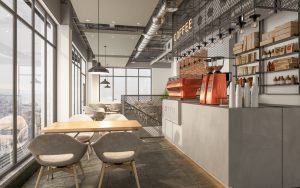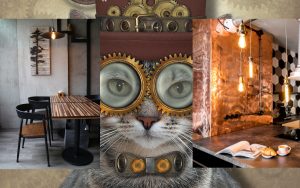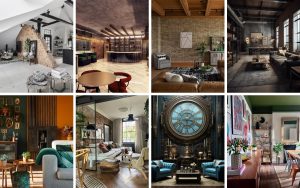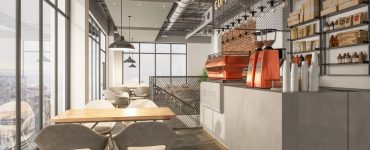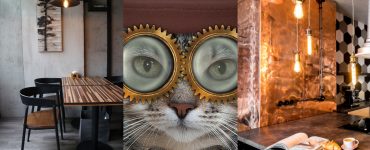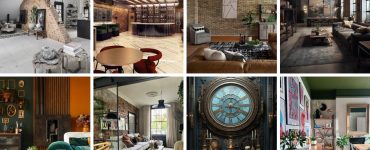Industrial design is a style that has been gaining immense popularity for its unique blend of raw and utilitarian aesthetics. Its charm lies in the ability to showcase the beauty of exposed structures, raw materials, and functional furnishings. But, perhaps one of the most critical elements that can make or break an industrial interior is the color palette.
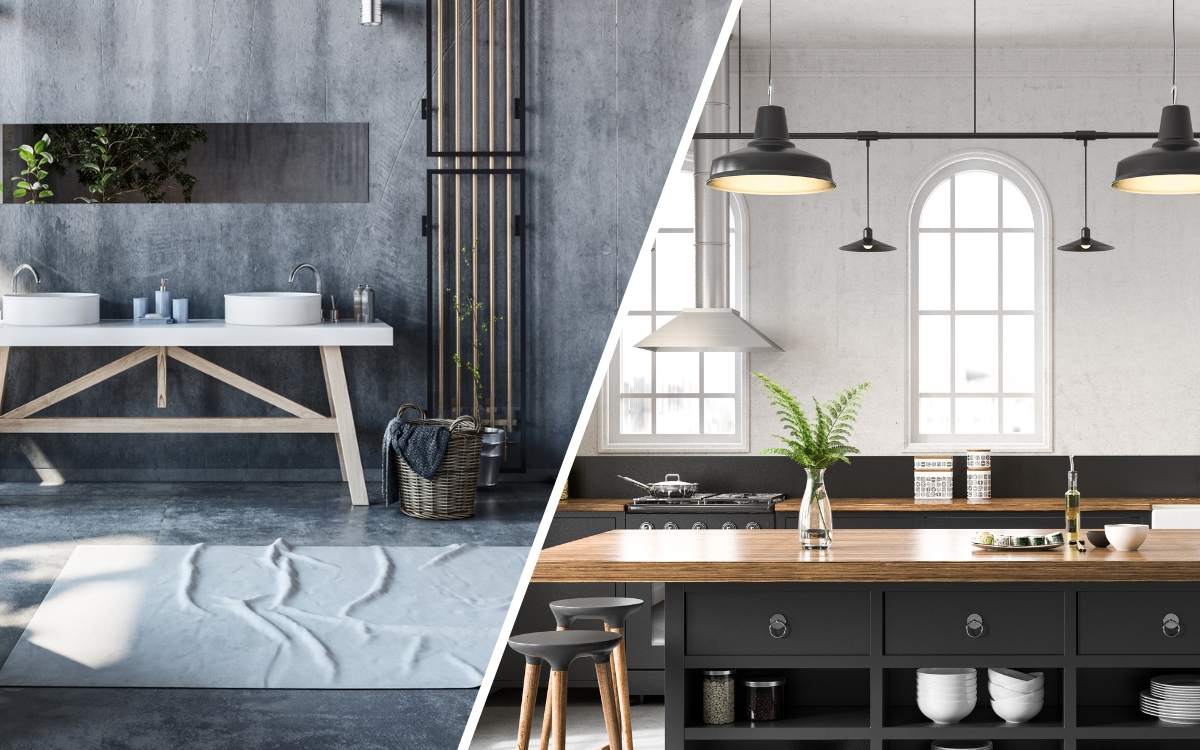
In this blog post, we will take you on a journey through the world of industrial interior design and explore how selecting the right colors can significantly impact the overall ambiance of your space. Whether you’re a seasoned designer or someone looking to transform their home or office, understanding the nuances of industrial palettes will help you curate a space that’s visually appealing, functional, and true to the essence of industrial design.
Factors to Consider Before Choosing a Palette
Analyzing the Space and Architecture
Before diving into the selection of a color palette for your industrial interior design, take a step back and carefully analyze the space and its architectural elements. Understanding the layout, proportions, and unique features of the room is crucial.
Consider the size of the space, the height of ceilings, the presence of exposed beams or brick walls, and the amount of natural light that filters in. These architectural elements play a pivotal role in determining how colors will interact and complement each other within the space.
Additionally, consider the purpose of the room and its intended use. Is it a cozy living area, a functional workspace, or a trendy café? Each space has its own requirements when it comes to color selection. For instance, a living room may benefit from warm and inviting tones, while a workspace could benefit from cooler and more focused colors.
Identifying Your Preferred Aesthetic
The world of industrial interior design offers a plethora of aesthetic variations, ranging from rugged and rustic to sleek and modern. Identifying your preferred aesthetic is essential before finalizing a color palette. Ask yourself what draws you to the industrial style—is it the rawness of exposed materials, the appeal of minimalist décor, or the combination of vintage and contemporary elements?
Once you have a clear understanding of your preferred aesthetic, you can narrow down the color options that align with that vision. If you’re drawn to a more vintage-inspired industrial look, warmer and earthier tones may take precedence. On the other hand, if you lean towards a modern industrial vibe, monochromatic schemes with bold accents could be more suitable.
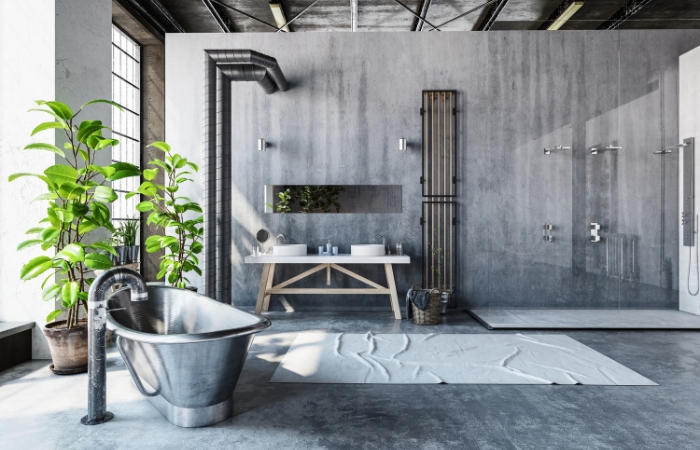
Balancing Functionality and Visual Appeal
While aesthetics are important, don’t overlook the functional aspects of the space when choosing a palette. Think about the practicality and usability of the area. For instance, if you’re designing an industrial-themed office, you’ll want colors that promote focus and productivity. In contrast, if you’re designing a cozy café, you’ll aim for colors that encourage relaxation and socialization.
Strike a balance between functionality and visual appeal by choosing colors that not only look great but also enhance the purpose of the room. It’s essential to ensure that the palette complements the activities that will take place within the space.
Exploring Color Palettes for Industrial Interior Design
Monochromatic Schemes
When it comes to industrial interior design, monochromatic color schemes can be incredibly impactful. Emphasizing various shades of gray and charcoal creates a sleek and modern ambiance that beautifully complements the raw elements of industrial spaces.
The varying tones of gray add depth and dimension to the room while maintaining a cohesive and sophisticated look. To add accents and contrast to the monochromatic palette, incorporate black and white elements strategically. Black fixtures or furnishings can create bold focal points, while white accents add a touch of brightness and balance.
Warm and Cozy Palettes
For those seeking a more inviting and intimate atmosphere, warm and cozy color palettes can be an excellent choice. Infuse the space with earthy tones like browns, rustic reds, and burnt oranges. These warm hues evoke a sense of comfort and nostalgia, creating an inviting and homely vibe. When paired with industrial elements such as exposed brick walls or wooden beams, these warm colors can create a charming and harmonious space, perfect for relaxation and gatherings.
Cool and Calm Palettes
Cool and calm color palettes can introduce a sense of serenity and tranquility into industrial spaces. Incorporate shades of blues and greens to create a soothing atmosphere reminiscent of natural environments.
These colors can evoke feelings of calmness and freshness, providing a relaxing retreat from the hustle and bustle of urban life. Consider using cool tones in spaces that require a sense of peace and focus, such as bedrooms or meditation areas. Complement the cool palette with soft textures and natural materials to enhance the overall ambiance.
Playing with Metallics and Industrial Finishes
Incorporating metallics and industrial finishes is a fantastic way to elevate the authenticity and visual appeal of your industrial interior design. These elements add a touch of rugged elegance and a sense of history to the space, paying homage to the roots of industrial design. Let’s explore how you can effectively play with metallics and industrial finishes to create a captivating and truly industrial space.
Embracing Steel, Iron, and Copper Accents
Metals like steel, iron, and copper are synonymous with industrial design, and incorporating them into your interior can bring an instant industrial flair. Consider using steel elements in exposed beams, industrial-style stair railings, or metal door frames.
The raw and robust appearance of steel adds an edgy and authentic feel to the space. Iron accents, such as wrought iron light fixtures or decorative pieces, can introduce a touch of vintage charm. Copper, with its warm and earthy tones, can be used for various accessories and accent pieces, infusing a sense of sophistication into the design.
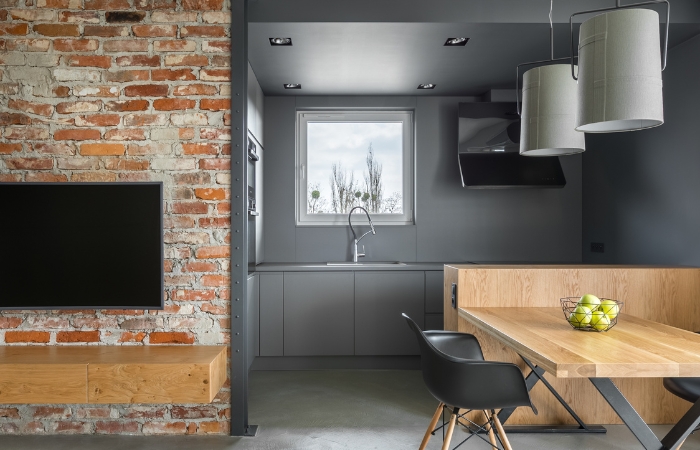
Combining Matte and Polished Finishes
Playing with different finishes can create captivating contrasts within your industrial interior. Combining matte and polished surfaces adds depth and texture to the space. For instance, matte black or brushed steel countertops can be paired with polished copper or chrome fixtures. The interplay of these finishes adds visual interest and keeps the design from feeling one-dimensional. It’s important to strike a balance between the two finishes to ensure a cohesive and harmonious look.
Enhancing the Industrial Vibe with Exposed Metal Elements
One of the defining features of industrial interior design is the celebration of raw and exposed architectural elements. Embrace this aspect by leaving metal elements, such as ductwork, pipes, and support beams, exposed rather than concealing them behind walls or ceilings. Exposed metal creates an industrial charm that harks back to the roots of this design style, while also adding an urban and contemporary edge.
Utilizing Industrial Lighting Fixtures
Lighting fixtures are an excellent opportunity to incorporate industrial finishes and designs. Opt for pendant lights with metal shades, which not only provide functional lighting but also serve as eye-catching industrial accents.
Industrial-inspired sconces and chandeliers with metallic finishes can be used as statement pieces, adding character and flair to the overall design. Edison bulbs, with their vintage filament design, are also a popular choice for industrial-style lighting, infusing a nostalgic and warm glow into the space.
The Impact of Lighting on Your Palette Choice
Lighting plays a pivotal role in industrial interior design and has a significant impact on the overall ambiance and perception of color within a space. Understanding how lighting interacts with your chosen color palette is essential to curate a captivating industrial interior that truly comes to life.
Natural Lighting Considerations
Natural light is a valuable asset in any interior design, and industrial spaces are no exception. The amount of natural light that enters a room can greatly influence the appearance of colors throughout the day. Therefore, it’s essential to consider how your chosen color palette responds to different lighting conditions.
If your industrial space boasts large windows or glass walls, take advantage of the natural light to enhance the vibrancy of your colors. Bright and airy spaces with ample sunlight can accommodate a wider range of colors, including darker tones that might feel too heavy in a poorly lit room. Keep in mind that natural light tends to bring out the truest colors, making it an excellent opportunity to showcase the authentic hues of raw materials and industrial finishes.
Maximizing Window Spaces
To make the most of natural lighting, ensure that window spaces are unobstructed and allow light to flow freely into the room. Avoid heavy drapery or dark-colored curtains that could hinder the diffusion of sunlight. Instead, opt for lighter or sheer curtains that complement your color palette and let natural light filter through, creating an inviting and well-lit atmosphere.
Balancing Sunlight and Shadows
Exposing raw architectural elements, such as exposed brick walls or wooden beams, can create captivating shadows and highlights that add depth and character to your industrial interior. Embrace these natural contrasts by choosing a color palette that complements the interplay of sunlight and shadows. Consider how the changing patterns of light throughout the day will affect your chosen colors and adjust your palette accordingly.
Artificial Lighting Effects
While natural lighting is essential, artificial lighting also plays a vital role in setting the mood of your industrial interior. Industrial-style lighting fixtures and Edison bulbs can contribute to the overall atmosphere and enhance the impact of your chosen color palette.
Consider the warmth and color temperature of your artificial lighting to ensure it complements the tones in your palette. Warm-toned lighting can amplify the coziness and intimacy of warm color schemes, while cooler lighting may enhance the calmness and serenity of cool-toned palettes.
Enhancing Ambience with Dimmers and Layers
To create a dynamic and flexible ambiance, incorporate dimmers and layered lighting into your design. Dimmers allow you to adjust the intensity of the lighting, enabling you to create different moods and atmospheres throughout the day or for various activities. Layers of lighting, such as using a combination of ceiling lights, floor lamps, and table lamps, add depth and dimension to the space, making it more visually appealing and inviting.
Avoiding Common Palette Mistakes
Creating the perfect color palette for your industrial interior design is essential to achieving a cohesive and visually appealing space. However, there are some common mistakes that designers and homeowners often make when selecting colors. By being aware of these pitfalls, you can ensure a successful and harmonious design.
Going Overboard with Bright Colors
One of the most common mistakes in industrial interior design is using overly bright or bold colors that clash with the raw and muted elements typical of the style. While pops of color can add interest and vitality, it’s essential to use them sparingly and thoughtfully. Avoid overpowering the space with vibrant hues that distract from the industrial aesthetic. Instead, opt for muted or toned-down versions of your preferred colors to maintain the authentic and understated charm of industrial design.
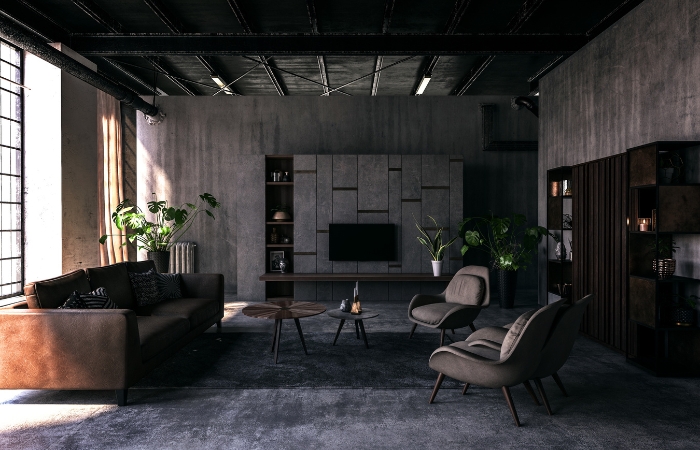
Ignoring the Existing Architecture
Failing to consider the existing architectural features of the space can lead to a mismatched and disjointed color palette. Embrace the unique elements of your industrial interior, such as exposed brick walls, wooden beams, or concrete floors, and choose colors that complement and enhance these features.
Colors that clash with the architectural elements can disrupt the overall harmony and feel out of place. Make sure your color palette works in harmony with the existing structure and materials to create a cohesive and well-integrated design.
Neglecting Cohesion and Flow
A common pitfall in any interior design is neglecting the flow and cohesion of the space. In industrial design, where the focus is on the seamless integration of raw materials and functional elements, this becomes even more critical. Avoid creating disjointed spaces with inconsistent color choices.
Ensure that the colors you select transition smoothly from one area to another, creating a unified and cohesive flow throughout the entire space. Utilize color to connect different zones within the room and maintain a sense of visual harmony.
Disregarding Color Psychology
Color psychology plays a significant role in influencing emotions and perceptions. Ignoring this aspect can result in a space that evokes unintended feelings or lacks the desired atmosphere. For example, using vibrant reds in a workspace may lead to a sense of restlessness or anxiety, while cool blues in a social area could create a serene and calming ambiance. Consider the intended use of each space and the emotions you want to evoke, and select colors accordingly to align with the desired mood.
Conclusion
By delving into the origins and characteristics of this style, understanding the key elements that make it distinctive, and learning how to play with color, lighting, and textures, you have the tools to create an industrial space that reflects your personality and resonates with your vision.
Remember that industrial interior design is all about embracing imperfections and showcasing the beauty of raw materials and exposed structures. When selecting a palette, always consider the existing architecture, the functionality of the space, and the mood you want to evoke.



